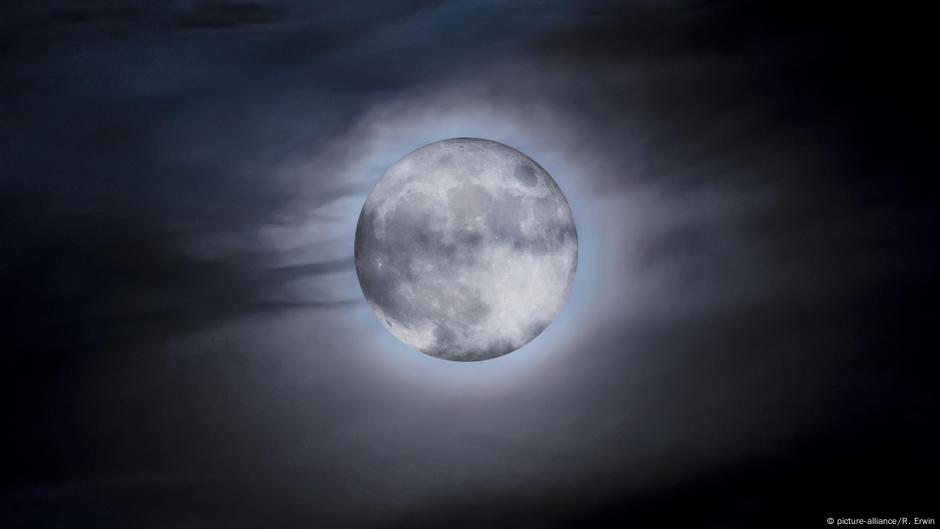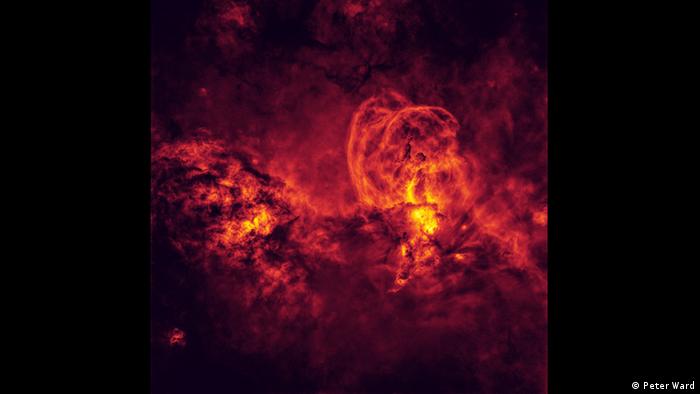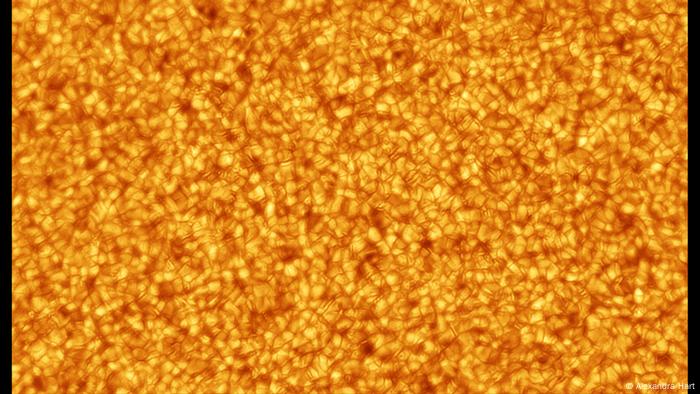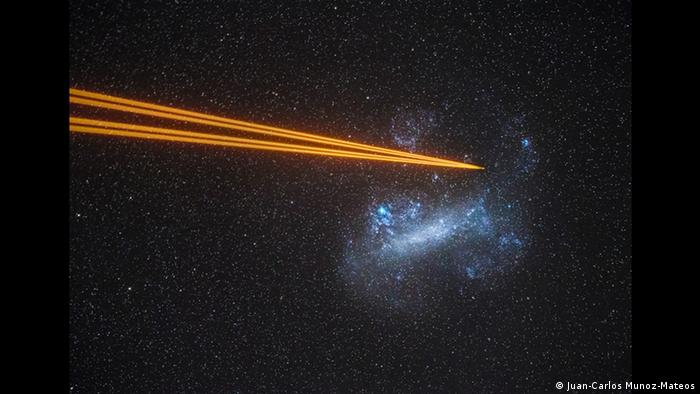For a long time the satellite was considered dry bone. Then, however, the scientists found water molecules in magma samples brought to Earth by astronauts. Two studies now show: There is probably even more water on the moon than expected.
There are indications of both water molecules on the surface and areas on the moon where water could be permanently preserved as ice, two teams of scientists report in the journal Nature Astronomy.
Scientists investigate “cold traps”
In the first study, researchers around Casey Honniball of the University of Hawaii in Honolulu analyzed data from the “Sofia” flying observatory. While investigating the Clavius crater south of the Earth’s satellite, they found evidence of water molecules. They suspect that these could be kept mainly in glass beads or in crevices in the rubble on the surface. In general, they assume that water molecules are more likely to occur in areas near the polar than in other regions closer to the lunar equator.
-
The most beautiful views of the cosmos
Northern lights over Lapland
Photographer Tom Archer took this photo in freezing temperatures of -35 ° C in Northern Finnish Lapland: while exploring the winter landscape, he discovered the lonely tree he chose as the subject for his photo. At first the sky was still overcast, but gradually it cleared up and this spectacular polar light revealed itself before the photographer’s eyes.
-
The most beautiful views of the cosmos
The cosmic hell
This image of the planetary nebula in space was later modified in color so that the cosmos looks like a giant fireball. With this, photographer Peter Ward wants to remember the bushfires in Australia that caused the destruction of more than twelve million hectares in 2019 and 2020.
-
The most beautiful views of the cosmos
Andromeda-Galaxie, brother
The image by Frenchman Nicolas Lefaudeux shows the Andromeda galaxy, more than two million light years away. The blurred edges of the image create an illusion of proximity, and distant stars look like tiny particles of dust. With this admission, Lefaudeux secured the overall win of the competition and £ 10,000 in prize money.
-
The most beautiful views of the cosmos
Dolphin in space
Photographer Connor Matherne’s motif is strongly reminiscent of a dolphin’s head, but in reality it is a gas bubble that is launched by the bright blue star in the center of the image. This sensational photo was taken with an exposure time of no less than 33 hours.
-
The most beautiful views of the cosmos
Finnish color show
Finland is famous for its Northern Lights. The natural phenomenon in the photo is known as the “Green Lady” – some recognize the silhouette of a woman in green rays in a magical dress that glows with green, blue and pink.
-
The most beautiful views of the cosmos
Infinite expanse of the universe
With this image Łukasz Sujka captures two giants of our galaxy. A special alignment of the Moon and Jupiter on October 31, 2019 allowed the photographer to capture this particular image. What this extremely demanding project required was the highest level of technical precision and some luck as well.
-
The most beautiful views of the cosmos
Close up of the sun
With this photo, photographer Alexandra Hart takes a close look at the sun’s surface. The plates, which appear tiny in the photo, are actually an incredible 1000 kilometers in diameter and are constantly in motion. To get this extraordinary image, the photographer used a very short exposure time of exactly 8,431 milliseconds.
-
The most beautiful views of the cosmos
Colorful polar sky
For many years, photographer Thomas Kast has been looking for polar stratospheric clouds. Eventually it hit gold in Northern Finnish Lapland. He took his camera to a frozen river and started taking pictures. Meanwhile, the wool slowly changed shape and color – it was as if it were watching someone paint.
-
The most beautiful views of the cosmos
Starry sky over the desert
This spectacular image of the Milky Way was taken in the middle of the endless expanse of Jordan’s Wadi Rum desert landscape. During a trip, photographer Stefan Liebermann stayed there for three days.
-
The most beautiful views of the cosmos
Laser technology in space
Even though the image appears to be from a science fiction movie, it has nothing to do with Star Wars. It shows four laser streaks pointing towards a star cluster in the Magellanic Cloud. These lasers create artificial “stars” which are used to monitor and correct turbulence in the Earth’s atmosphere.
Autorin / Author: Maria John Sánchez
In the second study, a team led by Paul Hayne of the University of Colorado specifically looked for craters, crevices, and small areas where water ice could form. Using data from NASA’s “Lunar Reconnaissance Orbiter” and theoretical models, they looked for so-called cold traps – areas that are permanently in the shade where frozen water could be preserved due to constant cold. In addition to impact craters, this also includes smaller areas that are always shielded from the sun’s rays.
According to the study, an area of 40,000 square kilometers could be in permanent shadow on the moon – about twice what other studies have assumed. In theory, frozen water could be stored there. As expected, most of these regions are found in the polar regions of the celestial body; researchers identify 60% of areas in the southern hemisphere.
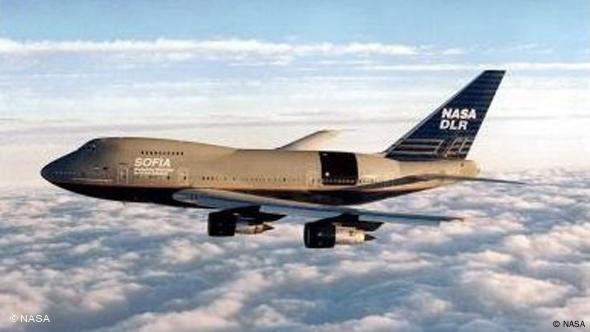
The “Sofia” flying observatory is a 43-year-old Boeing 747SP (archive photo)
“If you imagine standing on the lunar surface near one of the poles, you would see shadows everywhere,” Hayne reads in a statement from her university. “Many of these little shadows could be covered in ice.” Researchers cite Shackleton Crater at the South Pole, which is more than four kilometers deep and over 20 kilometers in diameter, as an example of larger areas with water ice.
Lunar water for Mars rockets
It is not clear where the water on the moon came from. French space researcher Francis Rocard of the CNES science center assumes it reached Earth’s satellite through asteroid impacts. The water molecules penetrated so deeply into the lunar surface that they were “trapped forever” there.
Water resources on the moon would be particularly important for future lunar missions, not just as drinking water for astronauts. If it were possible to use the moon’s water to transport it to the planned Lunar Gateway mini-station, further missions could become much easier and cheaper. Rocard spoke of the use of probes that could collect water on the moon to “supply” Mars rockets.
mir / rb (dpa, afp, rtr)
